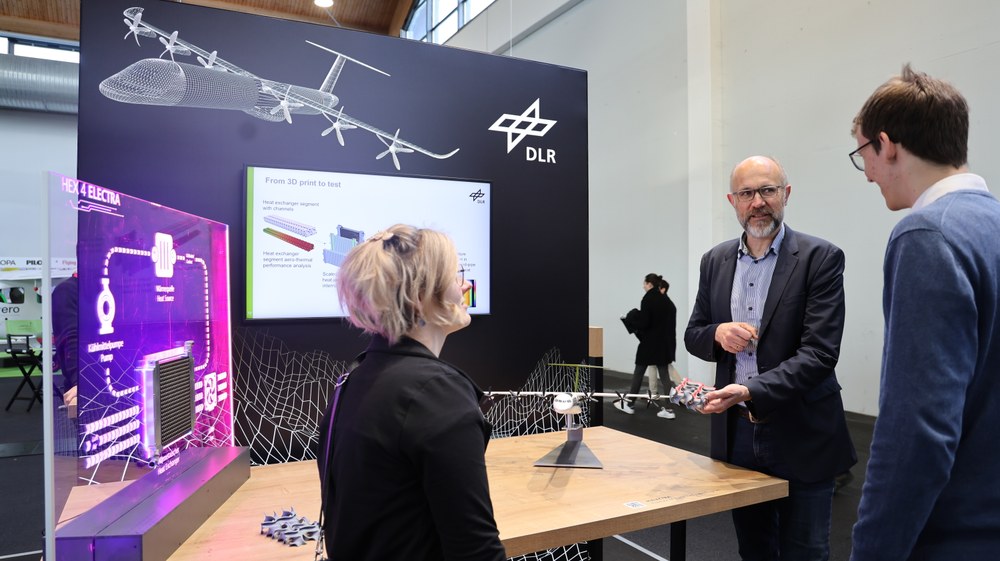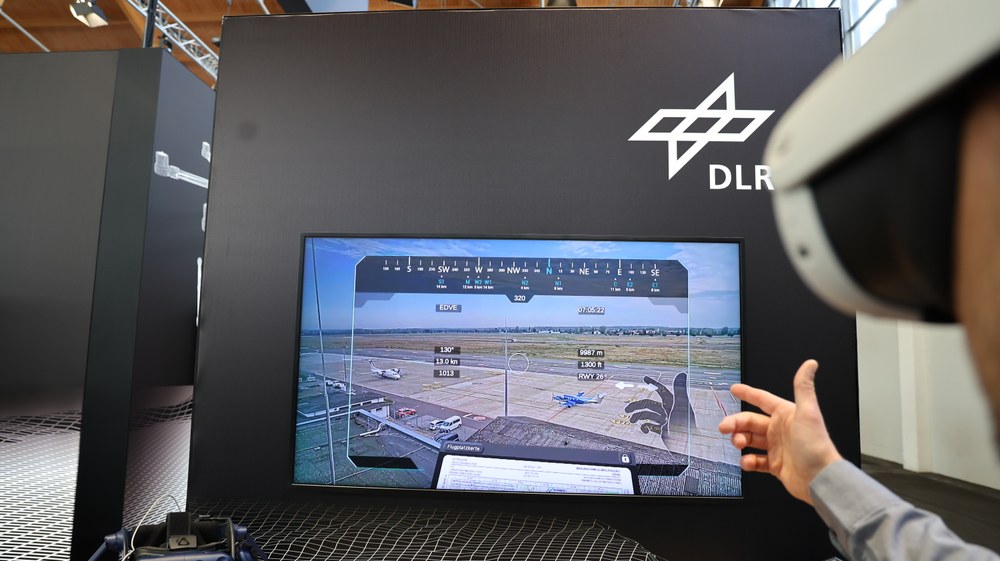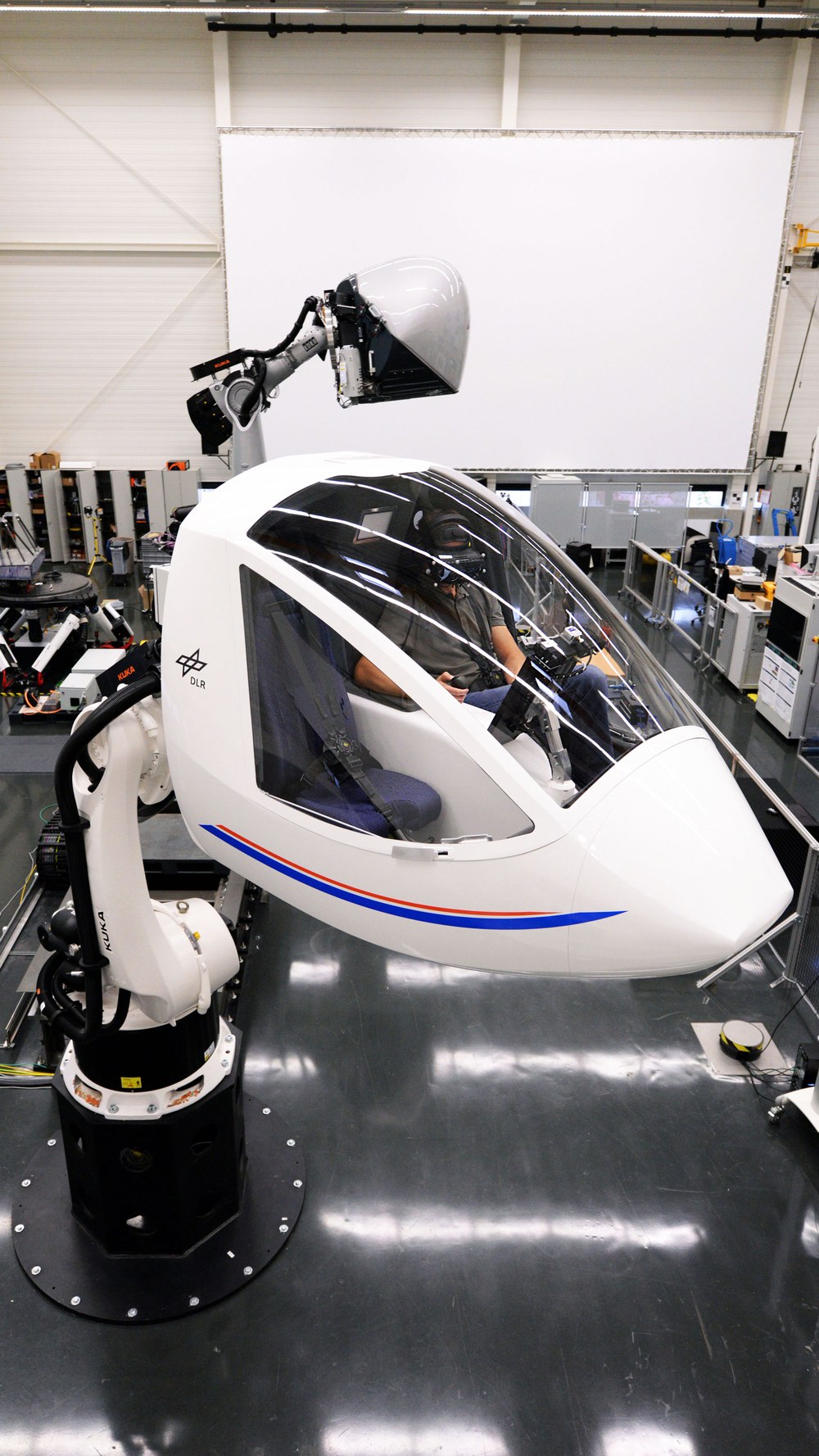DLR at the AERO 2025 aviation trade fair



- At AERO 2025, DLR will showcase innovative technologies for small and regional aircraft, as well as for small to medium-sized airports. The focus will be on virtual solutions, climate-compatible aviation, and promoting young talent.
- On the topic of electric flight, DLR can be found in Hall 7 at Stand A7-201. A second stand dedicated to gliding is located in Hall 1, Stand A1-120.
- AERO 2025 will take place from 9 to 12 April in Friedrichshafen and is the leading international trade fair for general aviation, business aviation and air sports.
- Focus: Aviation, climate-compatible flight, safety
AERO 2025 – the leading international trade fair for general aviation, business aviation and air sports – is taking place from 9 to 12 April in Friedrichshafen. This year, the German Aerospace Center (Deutsches Zentrum für Luft- und Raumfahrt; DLR) is presenting a range of digitally supported solutions for the aviation sector (Hall 7, Stand A7-201). Highlights include a system for the remote monitoring of small- and medium-sized airports, a retro-style video game that playfully explores safety aspects of electric flight for small aircraft, and a highly dynamic flight simulator for new aircraft concepts. Other exhibits feature new technologies for electrified propulsion – such as thermal management systems – as well as solutions for the security of satellite-based navigation. Visitors to the Gliding Expo will also be able to get a close look at DLR’s Discus-2c research aircraft (Hall 1, Stand A1-120).
"At AERO, we're showcasing how DLR is developing innovative technologies for small and regional aircraft, as well as for small and medium-sized airports," says Markus Fischer, DLR Divisional Board Member for Aeronautics. "We're also placing a strong emphasis on promoting the next generation of aerospace talent, working closely with German academic flying groups. In fact, our Discus-2c glider – which regularly supports student projects – is also on display in Friedrichshafen."
Highlights at the AERO 2025 DLR stand include:
Remote Tower meets Virtual Reality
Remote airport monitoring is becoming increasingly important worldwide. Air traffic controllers no longer need to be physically present at an airport to manage traffic and can even monitor multiple airports from a central remote tower centre. Originally developed by the DLR Institute of Flight Guidance, researchers are now taking the concept one step further with the Virtual Tower. In collaboration with universities, airports and air traffic control centres, DLR has developed a solution that allows air traffic controllers to work from anywhere in the world using just off-the-shelf virtual reality (VR) headsets and an internet connection. The entire control tower workstation – including the panoramic view – is transferred into a virtual environment where controllers can interact just as they would in a physical tower. This innovative Virtual Tower could greatly increase the efficiency and viability of airport operations, particularly at smaller and regional sites.
Retro game SMART-MET
The SMART-MET research project, led by DLR’s Technologies for Small Aircraft facility, focuses on various safety aspects in electric aviation. The researchers are presenting a special learning method for this purpose: Gaming! The team has developed a retro-style video game enabling trade fair visitors to pick up a controller and enter 2D and 3D gaming worlds. In the 3D game 'Wake Vortices', players collect virtual diamonds and are faced by wake vortices while answering questions about turbulence and its effects. In the 2D game 'Icing', gamers must decide whether to de-ice or reroute in order to safely land a small electric aircraft at its destination airport.
FAIRS aerial camera system
As part of the FAIRS (Fast Airborne Situation Assessment) project, the DLR Remote Sensing Technology Institute is presenting the latest version of its VABENE aerial camera system. Optimised for use in helicopters for traffic and disaster management, the system uses three high-resolution cameras to capture imagery that is instantly processed and transmitted directly to end users. The FAIRS setup includes an LTE data connection for mobile connectivity, antennas and a powerful but compact onboard processing unit. This enables rapid mapping applications – highly accurate, large-scale thematic image analysis in real time – which are urgently needed in emergency situations.
Discus-2c DLR research aircraft
The 'Discus-2c DLR' is opening up new possibilities for research in general aviation. First unveiled at AERO last year, this research glider is based on a widely used high-performance sailplane with an 18-metre wingspan made largely from carbon-fibre-reinforced polymer (CFRP). Operated by DLR's Flight Experiments facility, the glider supports research in fields such as aerodynamics, flight mechanics, aeroelasticity, instrumentation, human-machine interaction and certification. It also serves as a prototype for research on digitalisation in aviation – specifically the development and testing of a digital twin.
Interference- and deception-proof GNSS
Satellite navigation is essential for aviation, especially for approach and landing. But global navigation satellite systems (GNSS) can be disrupted (jamming) or manipulated (spoofing). To address this, the DLR Institute of Communications and Navigation has developed a robust GNSS receiver capable of detecting and efficiently suppressing compromised signals. At the DLR exhibition stand, researchers will demonstrate how their GALANT system enables reliable navigation, such as for drones, in the face of interference.
PAVSIM flight simulator
With the Personal Air Vehicle Simulator (PAVSIM), the DLR Institute of Flight Systems is studying new types of aerial vehicles such as small aircraft and electric vertical take-off and landing vehicles (eVTOLs). The simulated cockpit uses mixed-reality technologies and is mounted on an industrial robotic arm for highly realistic flight experiences. PAVSIM is used for research into flight dynamics, flight control systems and novel aircraft configurations. It also serves as a test platform for new simulation technologies, including mixed-reality interfaces and human-machine interaction. In addition, PAVSIM supports human factor studies related to pilot health and performance.
Technologies for climate-compatible flight
DLR is also presenting research on electric flight, including HEX 4 ELECTRA. The DLR Institute of Electrified Aero Engines will be presenting its current developments in thermal management – a 3D-printed heat exchanger structure developed for hydrogen-powered aircraft engines. The DLR Institute of Engineering Thermodynamics has created the Airfox software tool to design and simulate fuel cell systems for aviation. By entering basic aircraft data, users can determine the fuel cell system requirements for their aircraft. Visitors can also learn more about recent developments at the DLR sites in Cochstedt and Aachen-Merzbrück.
Related links
- AERO
- Discus-2c DLR
- DLR Institute of Flight Guidance
- DLR Facility Technologies for Small Aircraft
- DLR Remote Sensing Technology Institute
- DLR Flight Experiments Facility
- DLR Institute of Communications and Navigation
- DLR Institute of Flight Systems
- DLR Institute of Electrified Aero Engines
- DLR Institute of Engineering Thermodynamics
- DLR site Cochstedt
- DLR site Aachen-Merzbrück
